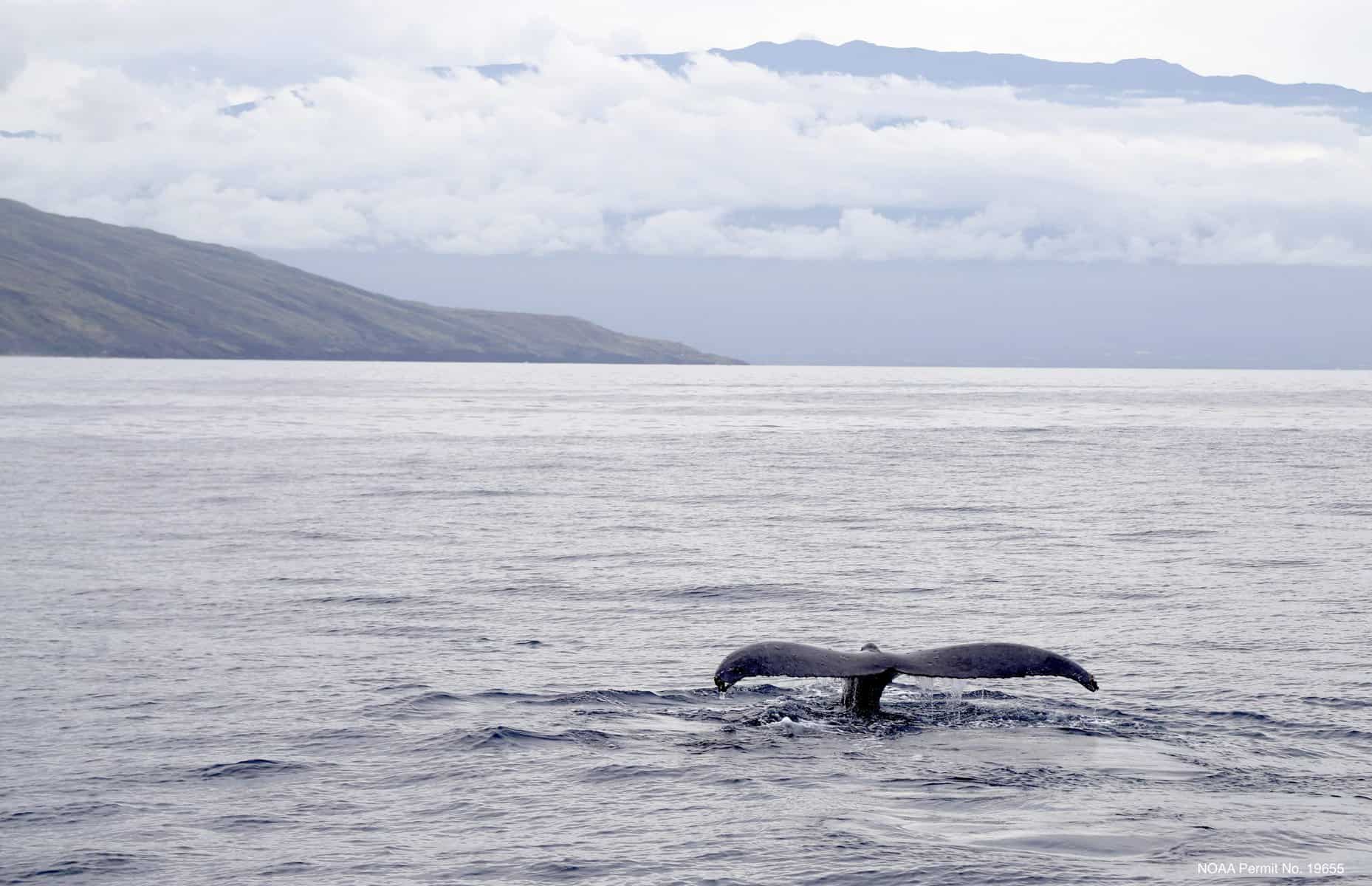

Photo: An estimated 10,000 to 12,000 humpbacks travel to Hawaii waters to breed, give birth and nurse their young each year. (Marina Riker/Civil Beat/2023/NOAA Permit No. 19655)
When a researcher first went to study whales from the air, he worried for their future. His recent findings make him hopeful.
In 2018, the federal government convened an urgent meeting in Hawaii to gather researchers from across the Pacific to figure out what to do about a grim trend: a sudden drop in the presence of humpbacks around the Hawaiian Islands.
The situation began unfolding a few years earlier, when a devastating heat wave struck the North Pacific near Canada and Alaska. Fish stocks collapsed. Seabirds starved to death. Humpback whales became emaciated, and thousands of miles away in Hawaii, researchers saw far fewer whales traveling to the islands each winter to breed.
“I remember sitting there thinking, it’s almost like finding out that a friend of yours is dying,” said Joe Mobley, a professor at the University of Hawaii Manoa. “Are we going to lose the whales in my lifetime?”
Mobley was among the whale experts who came together and settled on a mission to better understand why so many whales had vanished from Hawaii waters. He was braced for dire results, but in the years that followed, he found the opposite. […]
Full article: www.civilbeat.org
Clean water is essential for life, yet millions of Americans unknowingly consume contaminants through their…
Human brains contain higher concentrations of microplastics than other organs, according to a new study, and the…
From the Office of the Governor: In anticipation of a multi-day, significant atmospheric river in Northern California,…
From Governor Newsom: Scientists, water managers, state leaders, and experts throughout the state are calling…
Photo: A harmful algal bloom in Milford Lake, Kansas, made the water appear bright green.…
An expanded plastic foam coffee cup is at a donut shop in Monterey Park, California.…